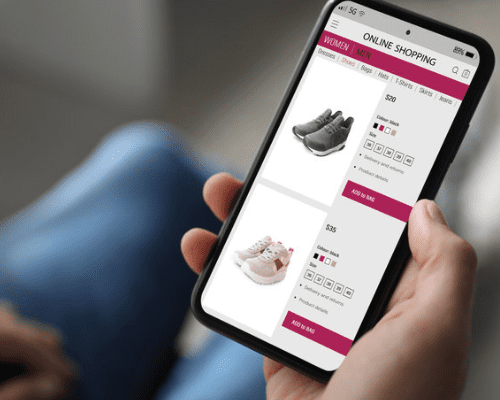According to Smart Insights, 86% of consumers stated that they were willing to pay more for a better customer experience, and so building core CX competencies can boost your profits as well as improving the image of your business.
Despite being at the heart of B2B and B2C sales, Customer Experience (CX) can often be a weak link. The concept is often misunderstood within organizations, with leaders making erroneous decisions based on limited understanding, and CX practitioners struggling to step back and explain it to those who don’t work with it as intensely as they do.
However, according to Smart Insights, 86% of consumers stated that they were willing to pay more for a better customer experience, and so building core CX competencies can boost your profits as well as improving the image of your business.
In essence, CX consists of two different elements; firstly, customers’ perceptions of how they interact with a brand, from first encounter to usage and service, and secondly, the process of understanding and forming a company’s customer experiences, and those of others, such as employees, who will affect CX.
To improve CX, according to a recent Forrester report, there are six key competencies that need to be built, which include research, prioritization, design, enablement, measurement and culture. These six areas of expertise cover the skills needed to enhance CX in all situations, from a traditional company’s customers to hospital patients, university students or even IT department users, and can be applied to employee experiences too.
The six CX competencies, unpacked
Forrester breaks down CX activities into six broad categories that each have an important role to play in improving experiences for customers. These are:
- Research to understand the needs and motivations of a specific population.
- Prioritisation to decide which of those needs and motivations to address.
- Design to conceive and specify experiences that address those needs and motivations.
- Enablement to provide the resources required for experiences to be delivered as designed.
- Measurement to assess whether the experiences are producing the desired outcomes.
- Culture to instill the right values and behaviours in people who contribute to the experiences.
(Forrester, CX Essentials: The Basics Of Customer Experience In Plain Language CX Pros Can Use To Explain It To Colleagues, 2020)
All of these objectives come together to advance CX, and are essential to a comprehensive experience, leaving customers satisfied and more likely to stay loyal to the company.
Acme Bank – a realistic example
In order to help business leaders and employees understand how these competencies apply in practice, Forrester suggests a fictional but completely realistic example, using Acme Bank. Through this, colleagues will come to understand how interconnected the steps are, but also how to correctly use them sequentially to achieve CX success.
- Research – Acme Bank digs deep into the banking-related needs and motivations of its desired customers by interviewing, surveying, and observing them, among other methods.
- Prioritisation – it’s unlikely that Acme can (or wants to) address all those needs and motivations, so it ranks them to decide which to tackle immediately and which to postpone or ignore.
- Design – Acme invents new experiences (or refines existing ones) that it believes will address the needs and motivations that it chose to prioritise.
- Enablement – Acme develops the resources it needs to turn the designs into customer-ready experiences — software for the digital aspects and employee training for the human aspects.
- Measurement – Acme examines customers’ perceptions of the experiences it is delivering and compares its findings to what it intended for them to perceive.
- Culture – Acme spreads customer-centric values and behaviours that improve and amplify the effect of employees’ activities across the other five competencies.
(Forrester, CX Essentials: The Basics Of Customer Experience In Plain Language CX Pros Can Use To Explain It To Colleagues, 2020)
Concrete examples like these facilitate the building of core CX competencies by providing applicable and transferable ideas for how each principle actually works in a functioning business environment.
Not just commerce – the reach and results of CX advancement
Good customer experience is essential for all interactions, whether they involve buyers and sellers, hospitals and patients, governments and citizens, or any other communications between service providers and their consumers. Although there are differences in what each organisation is looking to provide for the customer, the way to go about providing the best experience remains the same.
Allianz, a leading global insurer and asset manager, is a real example of how customer centricity and continuous feedback can significantly improve loyalty, satisfaction and ultimately, profits. According to a report by Insights for Professionals, 75% of Allianz business groups have achieved #1 loyalty leadership status, and Chris Fisher, the CEO of Allianz, states that customer centricity ‘[is] a culture and a way of doing business that will help us grow and be successful for decades.’
Apply these competencies and watch your business flourish
CX must be one of the foundations of all modern day businesses. According to IFP, companies that prioritise customer experience outperform the competition in stock returns by an average of nearly 80%, not counting their willingness to freely promote their favourite brands. This huge impact cannot be ignored, and through the application of the key competencies set out in this article, organisations can surpass these success rates and expand their brand profiles beyond all proportions.
These competencies are also applicable to the experiences of employees and other people involved in influencing CX.
Without taking steps to achieve employee satisfaction and better employee experiences, it is unrealistic to hope to achieve any advancement in CX. However, by using these competencies for all members of an organisation’s ecosystem, its future can seem brighter than ever.
At redk, we are a CRM and CX consultancy who specialize in implementing digital solutions. We are CRM experts with over fifteen years’ experience specialising in this space. We work with the most reliable, up-to-date software solutions to ensure your cloud-based CRM works with you to help you reach your goals.
Sources










